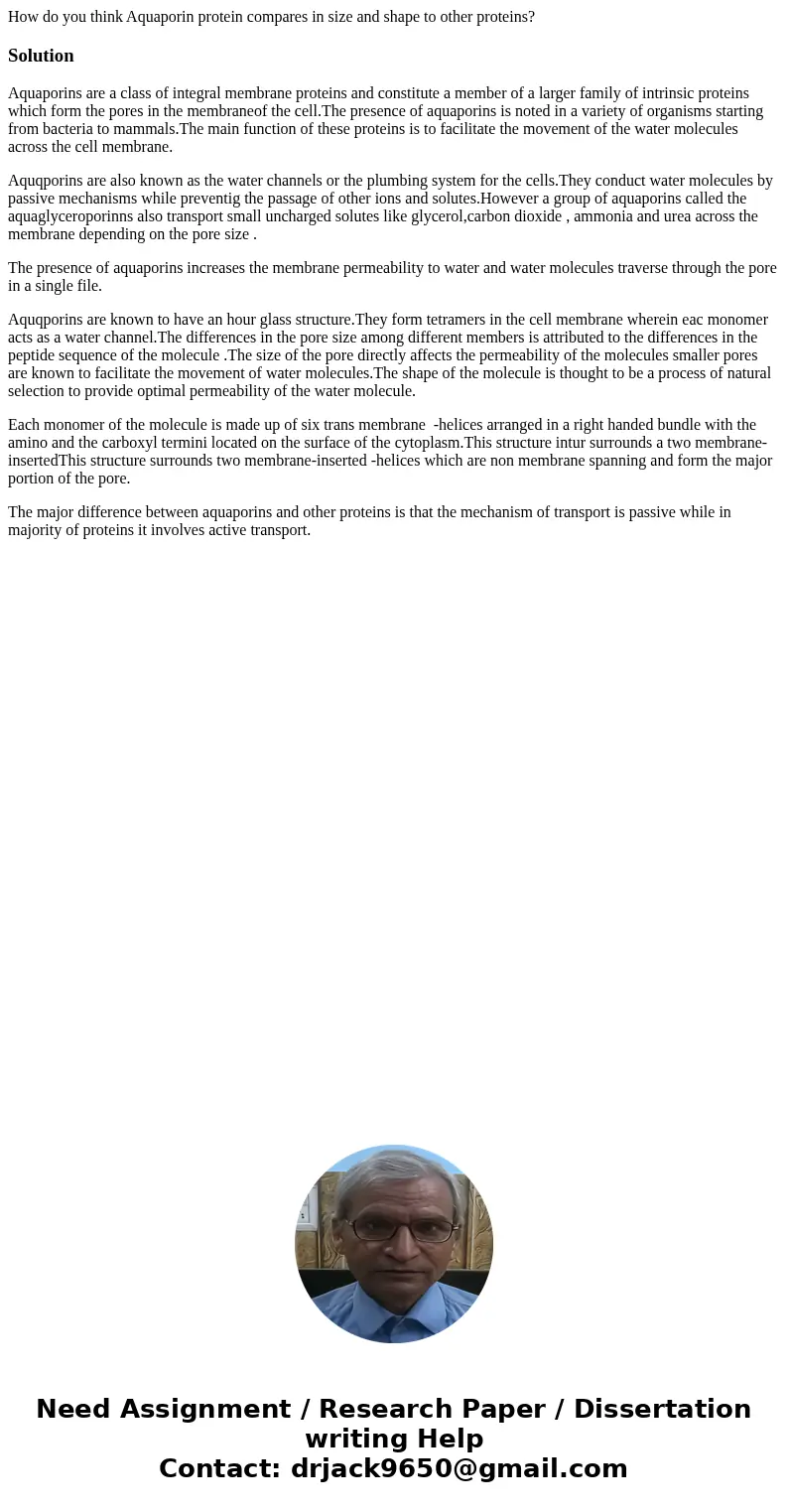How do you think Aquaporin protein compares in size and shap
How do you think Aquaporin protein compares in size and shape to other proteins?
Solution
Aquaporins are a class of integral membrane proteins and constitute a member of a larger family of intrinsic proteins which form the pores in the membraneof the cell.The presence of aquaporins is noted in a variety of organisms starting from bacteria to mammals.The main function of these proteins is to facilitate the movement of the water molecules across the cell membrane.
Aquqporins are also known as the water channels or the plumbing system for the cells.They conduct water molecules by passive mechanisms while preventig the passage of other ions and solutes.However a group of aquaporins called the aquaglyceroporinns also transport small uncharged solutes like glycerol,carbon dioxide , ammonia and urea across the membrane depending on the pore size .
The presence of aquaporins increases the membrane permeability to water and water molecules traverse through the pore in a single file.
Aquqporins are known to have an hour glass structure.They form tetramers in the cell membrane wherein eac monomer acts as a water channel.The differences in the pore size among different members is attributed to the differences in the peptide sequence of the molecule .The size of the pore directly affects the permeability of the molecules smaller pores are known to facilitate the movement of water molecules.The shape of the molecule is thought to be a process of natural selection to provide optimal permeability of the water molecule.
Each monomer of the molecule is made up of six trans membrane -helices arranged in a right handed bundle with the amino and the carboxyl termini located on the surface of the cytoplasm.This structure intur surrounds a two membrane-insertedThis structure surrounds two membrane-inserted -helices which are non membrane spanning and form the major portion of the pore.
The major difference between aquaporins and other proteins is that the mechanism of transport is passive while in majority of proteins it involves active transport.

 Homework Sourse
Homework Sourse